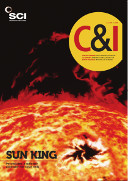Scientists have developed a new silicon biosensor that promises to dramatically speed up medical diagnostics, by detecting multiple proteins in a single micro-scale sample of a patient’s blood. The researchers at the University of York, UK, say it will reduce healthcare costs, avoid the need for patients to make several trips to the clinic – and ‘increase the chances of a successful and timely diagnosis’.
‘Current blood tests use laboratory methods [such as ELISA or Western blot] to detect the presence of specific biomarkers – proteins, antibodies or DNA,’ says PhD student Jose Juan-Colás. ‘These immunoassays are designed for one biomarker at a time, which means that in order to test the presence of X biomarkers, X immunoassays are required.’
The group’s new biosensor is different as it is capable of detecting a wide range of biomarkers all at the same time and in the same sample. It is the first silicon biosensor to harness both the optical and electrochemical properties of silicon, Juan-Colás says, and comprises nm-scale devices that all resonate at a specific optical frequency. These devices are light sensitive; when the environment around them changes, the local speed of light varies, and thus the resonant frequency is altered, he explains.
‘The novelty of our device is that, by exploiting its electrical properties, we have been able to individually modify the surface of each of these devices so that each of them can be sensitive, for example, to a different protein. In this way, when the protein is immobilised to the surface, it leads to a change in the resonance frequency.’
The key to developing the new sensor has been to overcome ‘the apparent conflict between the optical and electrical properties of the material,’ the York researchers write in a paper in Nature Communications (doi:10.1038/ncomms12769); electrochemistry requires materials of high conductivity, while ideal photonic materials exhibit low conductivity. The researchers were able to overcome this challenge by adding trace impurity elements or ‘dopants’ to a thin layer of silicon on the device surface to make it sufficiently electrochemically conducting to graft onto it various molecular probes, yet thin enough to minimise optical resonances in the underlying device structure.
They demonstrated that their biosensor works by selectively functionalising the component devices with a range of different probe molecules, initially an electrochemical probe, and then using it to detect and monitor two particular single stranded DNA sequences in parallel.
While the initial paper demonstrated its use for detection DNA bioconjugation, Juan-Colás points out that the technology is generic and can also be used for the detection of a range of substances, including enzymes and other proteins.
The group is now looking to test urine samples for urinary tract infections (UTIs), which have a high resistance to antibiotic development. If the biosensor can identify biomarkers of the infection and of resistance, the correct course of antibiotic treatment is more likely to be prescribed the first time around, rather than on repeat visits as is often currently the case with UTIs.
‘We are trying to identify what the limits of our sensor technology are in terms of the number of substances it can simultaneously detect,’ Juan-Colás says. ‘The fabrication of these silicon sensors can be performed using standard processes. This technology could enable the realisation of cheap and precise point-of-care devices that one can use at the patient’s bedside.’





